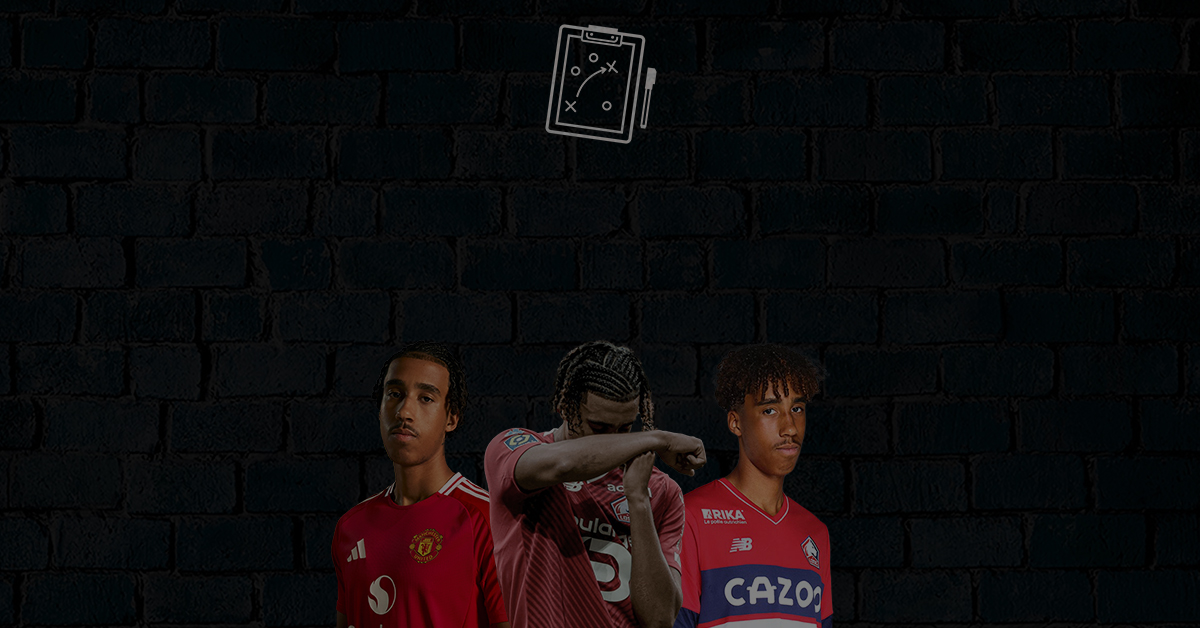On 18th July, 2024, Manchester United completed the signing of 18-year-old defender Leny Yoro from French Ligue 1 side Lille for a fee of €62m plus a potential €8m in add-ons. Yoro has joined United despite interest from Real Madrid, who opted against engaging in a bidding war with the Premier League club for the centre-half.
The prospect of snatching a highly rated teenager from Real Madrid’s attention already makes this signing a very interesting one, while the high fee for an 18-year-old also raises a few eyebrows. In this article, I will uncover every aspect of Yoro’s profile in great detail and score each of them (attempting a new scorecard system this time, hope you like it).
Career history
A Lille academy graduate, Yoro became one of the youngest first-team players to make his professional Ligue 1 debut at the age of 16 years and 6 months. After a first senior season in which he was mainly used as a rotation player (10 starts and 5 subs in 22/23), he became one of Lille’s regulars in his second full season (30 league starts and 9 cup starts in 23/24).
Scout Report
- Defending
Yoro is a defender, so this is where we will start the report. I’m going to break the aspects of his defending into five distinct parts. In each part, I’ll explain the trait I am measuring, show some examples of it via match footage and then rate Yoro on that trait.
1A) Pressing
I am defining all forward defending actions as pressing. In a nutshell, any action where Yoro has to step up the pitch to engage is counted here.
I find Yoro to be an excellent presser. His sense of awareness ahead of him combined with his good reach and long legs often mean that he sees the danger and quickly steps up to intercept or tackle. He can do this consistently in a game and it is one of the main avenues in which he constantly stops opponent attacks or wins the ball back.
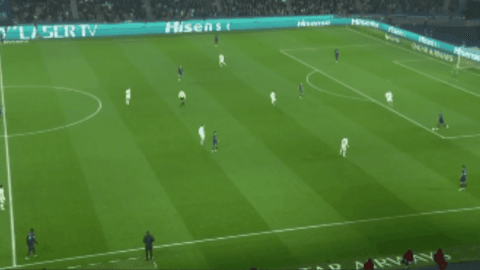
Lille often played a high line to support a high press under Fonseca and this suited Yoro well as it gave him licence to step up and intercept before attackers could receive the ball. One pattern where this often plays out is when a team tries to seek their central attacker via a long ball or grounded progressive pass and Yoro steps up in a timely fashion to win the ball.
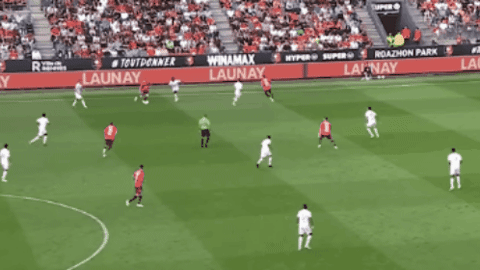
I wouldn’t say Yoro is an aggressive stopper and we will see why when discussing the other defending traits, but in moments where a quick interception ahead of a clear opponent attacker is possible, Yoro has the awareness, jump timing and reach to nick the ball off cleanly. abacus market link
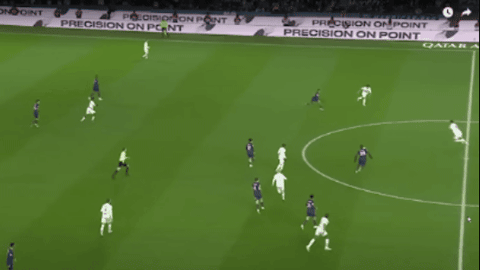
This is an aspect Yoro scores well on. I think there are the odd risks of pressing forward and getting beaten, which Yoro sometimes takes since he is confident of recovery, which is why I’m cutting 2 marks. But largely speaking, this is among Yoro’s consistently reliable traits.
Pressing: 8/10
1B) Box defending
I am defining all backward or deep defending actions as box defending. Actions where Yoro has to drop deep close to his box to engage or defend while tracking back.are covered here. I’m also including the cover play actions of positioning and sweeping behind the line in this section.
Let’s start with the good bits. Yoro is a good sweeper. He has the composure to drop behind the line, read the play and then use his speed and reach to mop up loose balls.
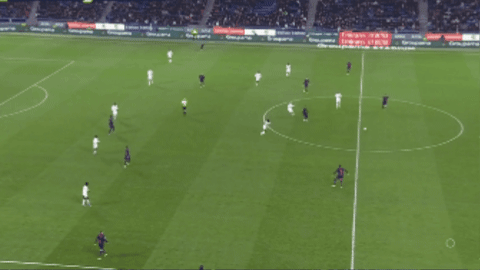
I think Yoro’s acceleration is decent, but it’s his top speed that’s excellent. Which is why when he has a view of the scene from a deeper position and is on his side of the goal to the ball or player, he has the speed and reading advantage to win the ball consistently.
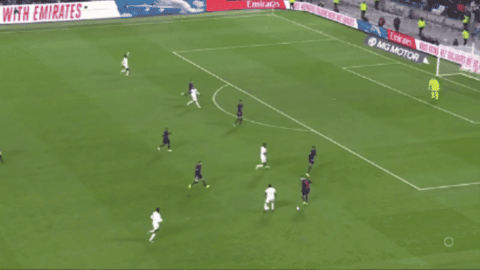
Even on occasions when he’s just in time or reacting from a slightly disadvantaged position, he is able to extend his long legs and win the ball in time. A debate is to be had on how often Yoro goes to ground, but often in the box when he has read the situation well and is in advantageous positions, it’s a successful action.
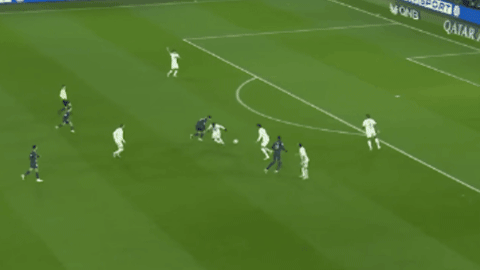
Now for the not-so-great parts. When faced with a dribbler in a sequence where he is running backwards, Yoro struggles. The cons of his immature body control show up in such situations and he often does get leg-tied as a result. This is an area dribblers can take advantage of if they have evaded his initial pressing action and are in good distance to force him to engage. In these situations of disadvantage, Yoro’s tendency to go to ground does more harm than good.
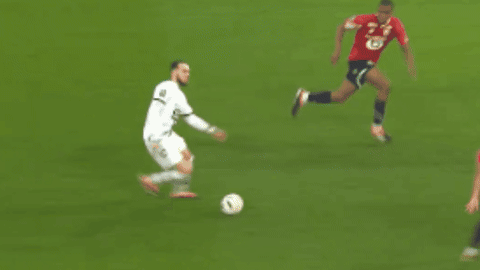
Yoro also has the odd concentration mistake when he’s defending deep in his box. He can get better at being aware of blind side and diagonal runs. I’ll put this down to age and inexperience, since it doesn’t show up often, but there are times when a well-timed run simply ghosts past a ball-watching Yoro.
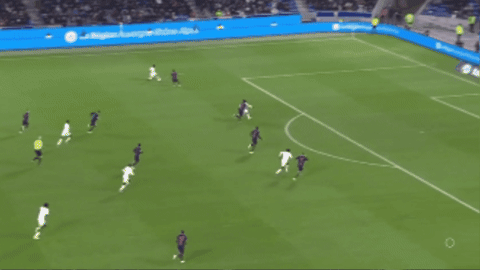
I am also not a big fan of Yoro’s engagement when opponents approach from wide. He often fails to stretch or make himself wide and block the incoming shot or cross. We will look at this issue more in the next defending section, but this is a reason Yoro fails to register too many blocks when box defending. Most of the blocks are the ones from central areas, but from wide areas he regularly displays a weakness in making himself big to intercept cutbacks, crosses and shots.
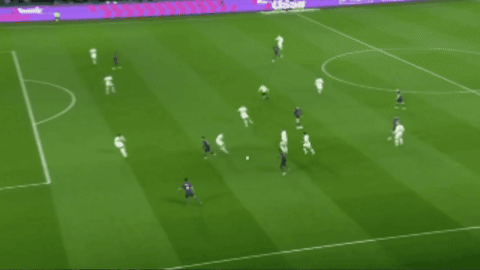
In summary of this section, while there are things to like about Yoro’s sweeping, reading and cover play, his reverse engine defending, block defending of wide approaches and the odd concentration mistake on smart opponent runs, make this one of his traits to improve more on.
Box defending : 6/10
1C) Channel defending
I am defining all sideways or wide defending actions as channel defending. Actions where Yoro has to drift sideways to engage or defend while tracking an opponent on the wing.are covered here. This often happens when his fullback steps up and the opponent player attacks that space, so it is also related to playing in a high line and high press setup which Lille often did.
The issue I mentioned before of how Yoro allows crosses when engaging wide shows up in a larger way here. When he’s pulled to the flank and faced with a dribbler who can also put in a pass from that position, Yoro does not do enough to use his good reach to block the pass. He has the physique and often displays similar feats in central scenarios, so it’s purely a question of habit and probably a relaxed attitude.
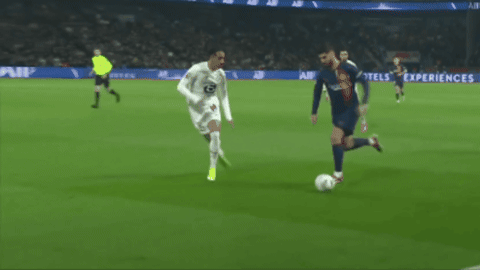
The good news is that Yoro’s reading of the game and speed to cover space shows up in wide defending, which is why his engagement rate is solid. He covers ground quickly to get in the face of the opponent player on time. But the question comes in how he engages after that. Since the play is away from the box and he’s often stopping a dribbler from getting to the byline, Yoro goes to the ground a lot more often in these situations. When it works, it looks exciting. When it doesn’t, it looks clumsy and often leads to a foul.
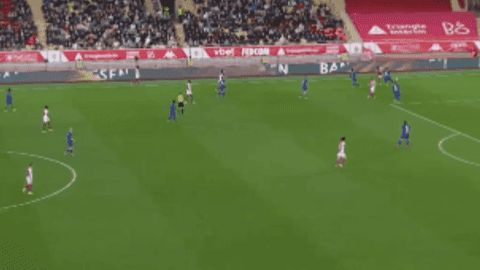
We have spoken about the pros of Yoro’s lanky physique, but not the cons. Being so thin and mobile also means that Yoro lacks power and muscle, at least as of now. This means that his upper body strength is still not developed enough. This issue shows up in wide defending moments. When engaging side-on with a dribbler who has good balance and can ride contact well, Yoro can be prone to being outmuscled. Shoulder-to-shoulder running situations result in Yoro being barged away far more easily than top center-backs should. This could be another reason Yoro relies on a quick sliding tackle since he feels he can’t win a direct upper body power battle.
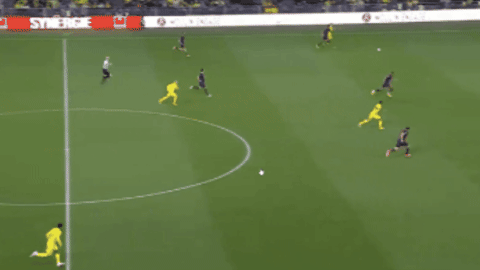
In summary of the channel defending section, while Yoro’s awareness and coverage ensure he travels well to wide areas, the ways he engages in can be improved. If it’s the same side winger, Yoro doesn’t do enough to cut off the cross. If it’s a powerful dribber, Yoro can be outmuscled or forced to go to ground which has a 50-50 success rate at best. All in all, there are more negative scenarios than positive ones when Yoro defends wide, as of now. I would call this a big area of improvement, even though the potential is there.
Channel defending : 5/10
1D) Aerial duels
More self-explanatory section, I am defining all duels with an opponent in the air as an aerial duel. Basically, a header contest. I’ll also be covering uncontested headers and attacking headers in this section. I won’t be covering aerials in any other section.
You would assume Yoro’s height and awareness make him an aerial duel monster and you wouldn’t be far from the truth. He had an aerial win % of 64% last season (as per fbref) which puts him in the top 20 percentile of Ligue 1. Yoro regularly wins his aerial duel fairly easily and has the jump and reach to support his height.
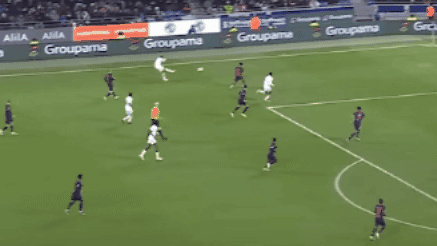
But one small issue is that Yoro’s lack of upper body power shows up again here. He is rarely able to manage a powerful aerial clearance. It’s often a weak looping clearance that doesn’t travel far.
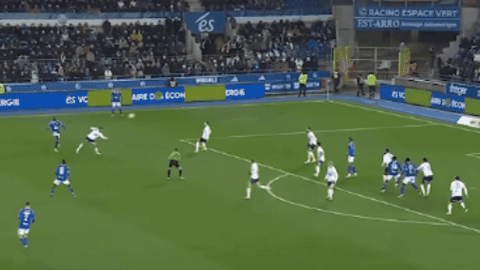
To his credit, Yoro manages this by exercising control over power. His height and technique allow him to be in control of the direction of the header, which means that he is often able to head the ball to a teammate or clear it to a comparatively less dangerous area.
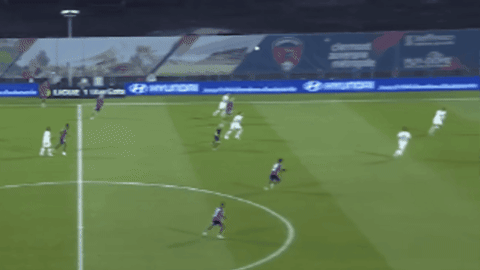
But if Yoro is central and deep then neither can he pick out a pass in a crowd nor head the ball far away enough for the danger to be thwarted. In such situations the ball often ends up around the box and doesn’t relieve pressure on his team. I would merge these specific instances with box defending issues since the worst scenarios correlate with when his team is deep and Yoro is central in a defensive block.
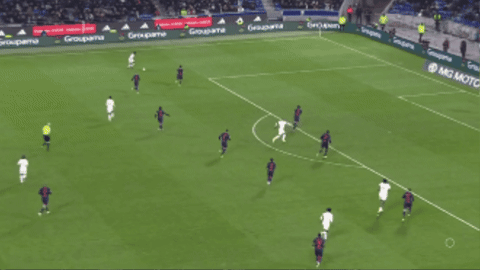
When it comes to attacking set pieces, Yoro’s combination of height and aerial control are a big advantage. His lack of power is not an issue, since he’s able to use the power of the delivery to guide the ball towards goal. Yoro regularly out jumps his marker and gets his header shots on target in attacking set piece situations. He has 2 goals from set pieces in his one regular season in 23/24, but I feel he has potential to get more in a year given his traits. This would be a good pro to help solve Manchester United’s set piece woes in an age where most teams are only maximising set piece impact every year.
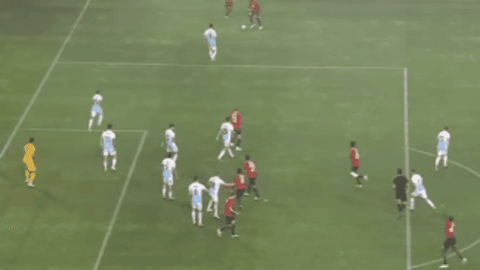
In conclusion to the aerial defending section, I don’t want to be too harsh, since Yoro’s height, awareness and control mean that he often wins his duel and pushes the ball to a teammate or less dangerous area or shot on target depending on the situation. The few times his lack of power gives away the ball in a bad area occur only when he’s deep and central and should be fixable as he develops upper body strength.
Aerial defending : 7/10
1E) Ground duels
I am defining all duels with an opponent on the ground as a ground duel. Basically, a classic isolated 1v1. This often occurs in transitions versus opponent dribblers running at Yoro or when the high line has been breached to isolate an opponent attacker vs Yoro.
I’ve seen most online discourse on this trait and there is a lot to unravel here. I have covered some 1v1 duels already in channel and box defending, but let’s take a deeper look here.
Yoro’s approach to ground duels is on the passive side. He keeps a distance from his attacker and buys himself time to study their movement before engaging in a timely manner. I think he does this to avoid going to the ground early or being taken out when he is adjusting his body. He prefers to trust his reading of the game, speed and reach to tackle in a timely manner when he has an advantage. This approach does seem sensible for this body type.
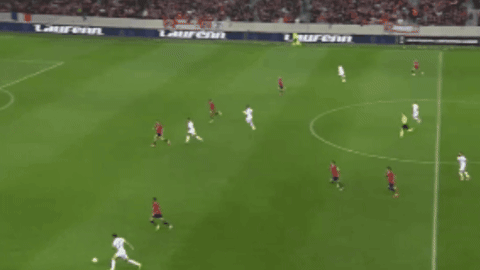
When faced with a squared-up and aware Yoro in his path, an opponent is forced to dribble wide to create separation and get out of Yoro’s range. This is when Yoro decides to stretch to win the ball or execute a clean tackle. It is Yoro’s I-got-you moment.
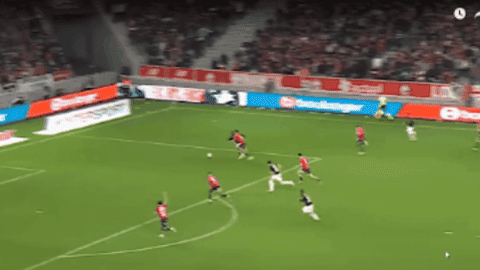
But as we’ve discussed before, him going to ground isn’t a failsafe move. Even in the times when he gets the ball, his ability to retain control of it after having slid in cannot be guaranteed, which results in the ball remaining in a dangerous area or being re-controlled by the opponent. In this case, Yoro’s teammate had to mop up the free ball after Yoro couldn’t get it under control even after a well-timed sliding tackle.
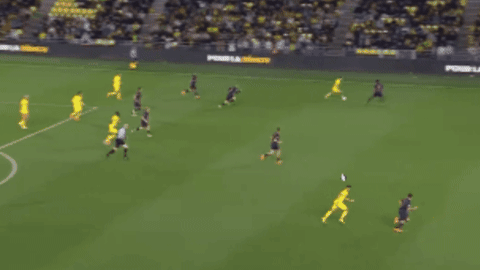
Another issue comes during the period when Yoro is keeping his distance and monitoring the opponent. A side effect of his developing body control, Yoro can be prone to manipulation during this waiting phase, especially when faced with a tricky dribbler with quick feet. We saw before how Yoro can get leg-tied when assessing a 1v1 for the timing to dive in. This coupled with his low upper body strength means that he can be beaten even before he engages by an opponent who doesn’t allow Yoro the right separation and distance with constant quick feet.
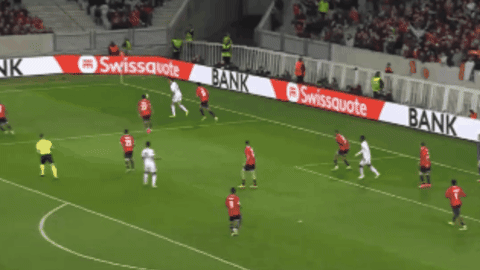
In summary of the ground duels section, Yoro can be prone to manipulation when 1v1 with an opponent which can force him to get unnerved due to low body control or going to ground early. But this is easier said than done and will require good timing from a good dribbler. In most other cases Yoro’s wait-and-tackle approach does yield good results. Yoro’s approach to ground duels is similar to Van Dijk, but he still lacks the Dutchman’s power and body control to resist going to ground and track and outmuscle his opponent regularly.
Ground defending : 6/10
That concludes our defending section. Here’s a snapshot of our scorecard so far.
- Passing
In modern football, a center-back’s abilities on the ball are as important as off it. Especially, for a top team that is expected to keep the ball more often than not and break down opponent blocks regularly. In this section, I will analyse Yoro’s passing traits.
2A) Pass security
Let’s start with the basics. Is Yoro a secure passer? Is he able to handle many passes and ensure they safely reach their target? Does he ensure possession security in the build up phase of his team? Does he position himself in a good area to receive to help his team protect the ball and keep moves going?
I found the answers to most of these questions positive. Yoro’s pass-and-move game is solid. He retains the ball well with clean crisp passes to his GK or fellow defenders.
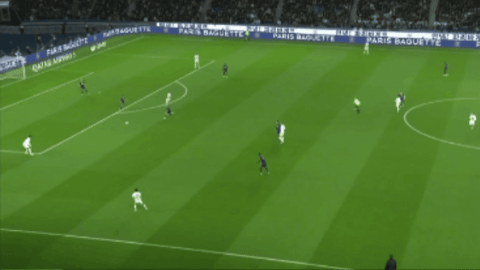
He has a good understanding of passing angles and is able to shift his body and execute passes where he wants, showing good understanding of the game and technical execution.
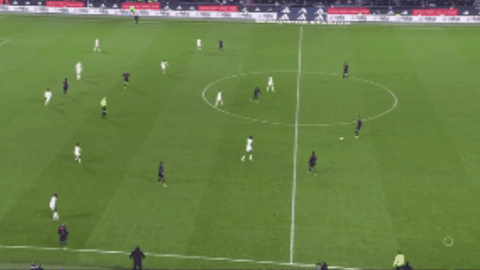
I would also like to point out his good positioning in possession. I find him a lot more switched-on in build up about where he needs to be to give his teammates passing angles to ensure progression and safety. See how he runs to take up a good passing option for his GK in the below sequence.
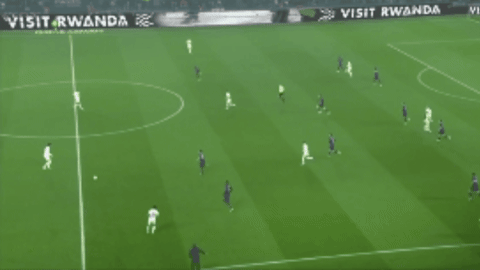
In conclusion, I don’t find any issues in this section. The reason I’ve cut 2 marks is strongly correlated to the next section, so I’ll explain myself there.
Pass Security : 8/10
2B) Pass empathy
“Passing the ball is communicating with another person; it’s being in the service of another person. It’s crucial. For the pass to be a good one, the player has to put himself in the position of the person who’s going to receive it. It’s an act of intelligence and generosity, what I call technical empathy.” — Arsene Wenger.
The above serves as a good definition of pass empathy. Is the power, speed, spin and direction of your pass putting your teammates in good positions for their next action?
I do see some issues here with Yoro. A combination of his laidback attitude and still-improving technique means that he often miscalculates the power needed in a pass.
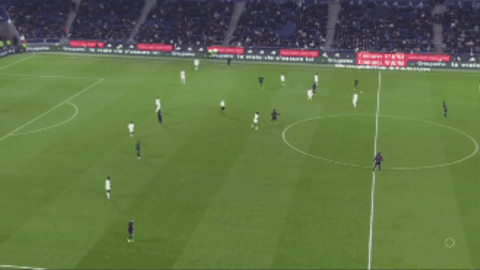
I’ve seen this happen more than once a game to wave it away as random one-offs. Especially when many of these mistakes happen when Yoro is not under any pressure and has time and space to pick out his intended target.
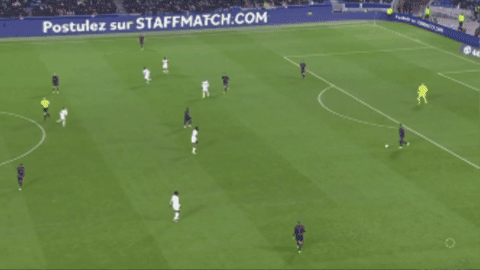
In other cases, this lack of technical empathy manifests as an overhit pass. Notice in the below example, like the first, how the ball is also bouncing a little instead of being a crisp on-the-ground trajectory. It seems trivial, but these moments make life easier/tougher for your teammates.
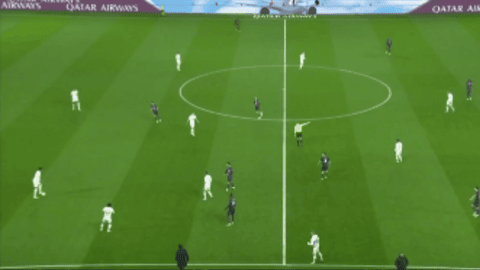
Yoro’s pass empathy needs improvement and this is also the reason I cut 2 marks in the pass security section. He does have the odd mistake when passing even without pressure deep in his half to a clear target. It’s nothing ground-breaking but there is a scope for improvement if he wants to become an even more secure passer who puts his teammates in good positions consistently.
Pass Empathy: 6/10
2C) Short pass progression
A progressive pass is a forward pass that attempts to advance a team significantly closer to the opponent’s goal. Different stats providers have different ways to measure this stat.
Anyone visiting fbref will notice that Yoro’s progressive passes stat is in the bottom 20 percentile for Ligue 1, insinuating that he’s not progressive enough. In this section and the next, I will look to debunk that claim by splitting progression into 2 parts – short and long progression. The former deals with how Yoro progresses using short grounded passes.
From the stat, you would think that Yoro does not attempt any central line-breaking passes, but this couldn’t be further from the truth. Often from central areas, Yoro looks up to find a pivot player with a clean pass that breaks the first line of the opponent team’s high press. These passes don’t get added to the progressive pass stat because of the short distance.
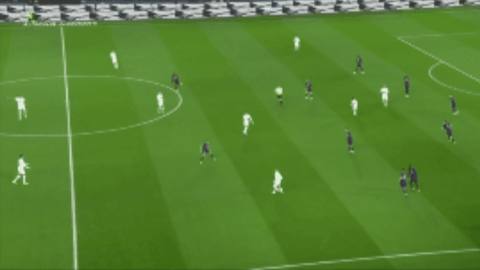
These CB to DM passes are often followed by a quick circuit that creates space for a teammate to drive into. So I would argue that even if the specific pass Yoro plays doesn’t count as a progressive one, it is often the first in a sequence of passes that helps the team create space to progress into. In that sense, him attempting these passes instead of a safe sideways one is key.

I have also noticed a good disguise pass on some occasions where he opens up his body aiming at a wide pass, but closes it quickly to slide in a central one. Again, the technique is all there and he just needs to up the numbers.
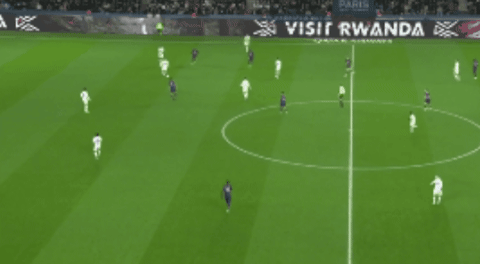
He also has a nice grounded pass to a dropping attacker, so there is no question on his execution, especially when it comes to line-breaking passes that aid central progression.
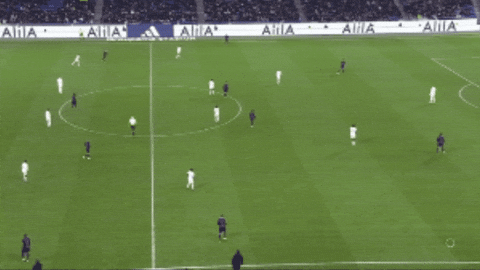
But all said and done, these are clips of what he CAN do and does on occasion. He still has some ways to go to become a regular line-breaker. He mainly loses out on stats because of the short length of his passes. He doesn’t attempt many passes beyond the quick central ones. For eg. There are times he could have released his same side fullback in space but didn’t. Improvement in his tactical intelligence, passing range and courage to attempt more will be needed to call him a truly progressive passer.
Short pass progression: 6/10
2D) Long pass progression
The long pass version of our previous section. I’ll keep this brief for a simple reason – Yoro doesn’t attempt many long passes.
This is one gap in his game. I had to see many games to see him pull off a basic switch in space to the opposite side of the field. He also fails to attempt longer passes on the side of the pitch he is on. This is one reason he misses out on a lot of progressive stats that other CBs rack up regularly.
(Yoro compared to Ligue 1 CBs in 23/24 as per fbref)
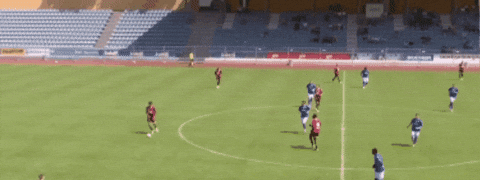
Again, I really don’t see any technical gap in this trait. It simply boils down to him noticing the opportunity and trying to develop himself. I feel like he limits his vision of himself to a short-pass-and-move player which is largely a good thing, but prevents him from seeing long pass opportunities, which are also vital for a team to progress up the pitch or get out of trouble.
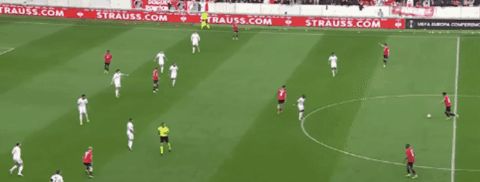
Lots to improve on this trait. No need to sugercoat it.
Long pass progression: 3/10
In conclusion to Yoro’s passing section, I feel he has a good hold on short passing which makes him good at retention and small-length grounded passes. But there is a lot of scope to improve his passing range, vision, long ball attempts and technical empathy.
Our scorecard so far looks like:
- Carrying
I’m covering all aspects of ball control from Yoro’s first touch to long-distance dribbling in the carrying section. A vital tool in a defender’s arsenal is the ability to break lines via carrying and this is another trend modern football has been going towards with the top managers desiring carriers from deep to disrupt opposition shapes and create spaces.
3A) Close control
In this part, I’ll be analysing Yoro’s first touch and ball manipulation to set himself up for his next action. Essentially, how he receives, scans, turns and gives himself the room to pass or carry after that.
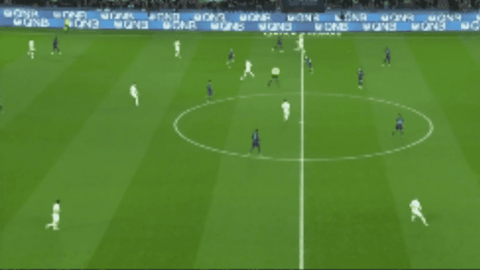
I’m a big fan of Yoro’s close control. The combination of his lean agile body, technique and awareness shows clearly in every ball reception. He is neat in his actions and displays high calmness and composure regularly.
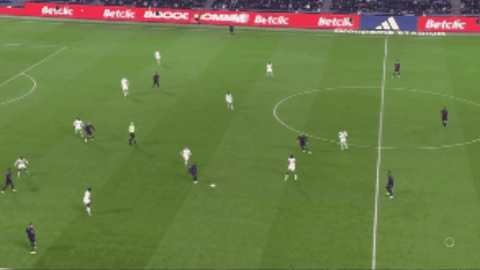
Even when the pass to him is hit with power or has an awkward bounce, Yoro’s rate of reception and close control remains consistently good.
Very few issues with this trait.
Close control: 8/10
3B) Carrying under pressure
An extension of the previous segment, but with the addition of intense opponent pressure and judgement of the variety and distance of Yoro’s dribbling out of such situations. With increasing finesse of pressing patterns across teams, being able to carry under pressure and help the team progress is now a vital trait for a modern CB.
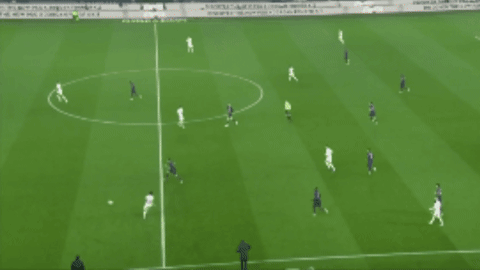
Yoro has a nice turning radius which he often is able to showcase when pressed. Again, a combination of awareness and his agile frame aids good technical quality. And all of this is possible thanks to his composed nature. He is unfazed under pressure.

Yoro is a great small space player mainly thanks to his excellent fine touches. Every touch and turn is calculated and crisp. And they not only help him beat the first line of opponent pressure, but also put him in good positions to pick out a good pass in the space created. He has the make-up of a progressive CB.
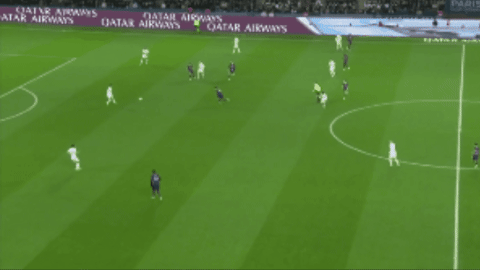
Again, the caveat comes in the form of actual volume and consistency of actions. Yoro CAN do it well, but doesn’t as often as a top team would want to see it. I feel he can be a lot more aggressive and decisive in his carrying under pressure to make more of his talent and help drive his team forward. But the talent is all there.
Carrying under pressure: 7/10
3C) Carrying in space
What does Yoro do when the opponent isn’t pressing and sitting in a deeper block and his team needs him to venture into space aggressively and either bait a press or put himself in a good situation to disrupt the block? What does Yoro do when his teammate has baited an opponent and played Yoro in the space created?

An example where the GK baits the opponent press and releases Yoro in space around the RB area. Yoro has the ball control, drive and speed to dribble into space until another opponent is attracted, which leads to the next forward pass. A good example of progression.
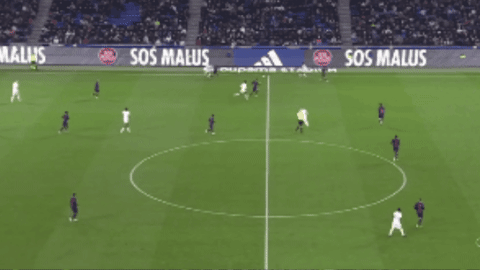
I like Yoro’s speed – both speed of thought and action. Even after a defensive action like an interception, he has the agility to drive into space and pick a good pass which is a valuable trait to counter immediately.
As always, my major concerns for this section are volume and range of actions. Yoro doesn’t attempt enough dribbles into space and doesn’t try long distance brave ones that break lines clearly. They’re mostly short carries that bypass one opponent. A lot of his passing and carrying actions feel limited due to his notion of being a great small space player even though he has the physique and technique to expand his zone of influence.
Carrying in space: 6/10
That closes our carrying section. Here’s a summary of all sections and traits so far:
- Others
4A) Fitness
Yoro is a very fit player. Here’s his injury history as per transfermarkt and his appearance data as per fbref:
Understandably, there’s not much to analyse for a player who turned 18 last December. He’s just had one minor injury and played 90% of his club’s games in the 23/24 season, once he obtained key starter status.
That said, I would hope his playtime isn’t as extreme at Manchester United in the early years. We have seen the perils of teenagers being overplayed at a young age and Yoro is already coming off a season that would have been straining for a 18-year-old. I would expect some gametime management in these initial years to limit his appearances under 35 90s per season. But from the look of things, he looks like a fit profile.
Fitness: 9/10
4B) Mentality
The final section of this report is on Yoro’s personality. We cannot complete a report without touching upon the person he is, beyond the player he is. I find that the best quotes about a player come from the staff and teammates who spend most time with him. So here are a few examples.
Paulo Fonseca (Yoro’s Lille manager): “It’s not normal to have an 18-year-old player like Leny with this maturity and the technical qualities he has. For me, he will be one of the best central defenders in France and probably in Europe. He is very balanced and there is no doubt that he will become a very great player.”
Jean-Michel Vandamme (Director of Lille’s training facility): “He had an accelerated learning process because he only spent two years in the training centre. ‘Leny has the ability to learn quickly. He wants to do it and has a real interest in analysing different situations, understanding them, while putting controlled pressure on himself.”
Rémy Cabella (Lille senior player): “He has all the qualities and the potential to do something huge. He is very humble and that is another of his strengths.”
Angel Gomes (Lille key player, ex-Man Utd): “As soon as he arrived in the group, I understood that he was going to reach the top. ‘When I discovered the pros at the age of 16 at Manchester United, I understood that it was different. He already had the right temperament and that’s not normal for a 16 or 17-year-old player who arrives. It’s as if he was already an experienced player. And it showed in his way of training, his way of behaving. His progression was obvious.”
Thierry Henry (Lille’s coach for the Olympic Games in Paris): “To impose himself at Lille as he is doing… He always has some moments of [being] a youngster, and that is quite normal. It comes slowly, you make mistakes and sometimes you take hits.”
So in summary of these quotes and a few others I have read, a few things stand out:
- Humble and willing to learn
- Mature beyond his years with a balanced temperament
- Analytical and is able to learn quickly
- Age-appropriate mistakes but has high potential
I don’t feel the need to add too much to this list. It’s a good takeaway of his mentality. The lack of experiencing pressure and expectations at the highest level is the only reason I’ll cut marks.
Mentality: 8/10
Our final scorecard for Leny Yoro reads:
Final thoughts and Manchester United fit
In summary of the entire report I’d say that in possession, Yoro is technically very capable and the base for that is his top tier close control. But I feel he’s still in his shell of a small-zone player and limits his volume and range of actions to a compact area. My take is that as his experience increases, his vision, tactical intelligence, courage and range of actions will all improve to close these gaps. I don’t see any physical limitations that prevent him from becoming one of the best ball–players in the world.
Out of possession, Yoro still has to nail his defending style. He is passive in nature to avoid early cases of going to ground or getting beaten, which makes channel defending and ground duels tricky, but his awareness, speed, height and range are solid, which make him good at covering, pressing and aerial duels in the short-term, while providing a good base for the rest to improve in the long-term. My take is that as his upper body and body control develop, he will be able to lean more on his strength and awareness, avoid risky duels and make it much tougher for opponents to get past him.
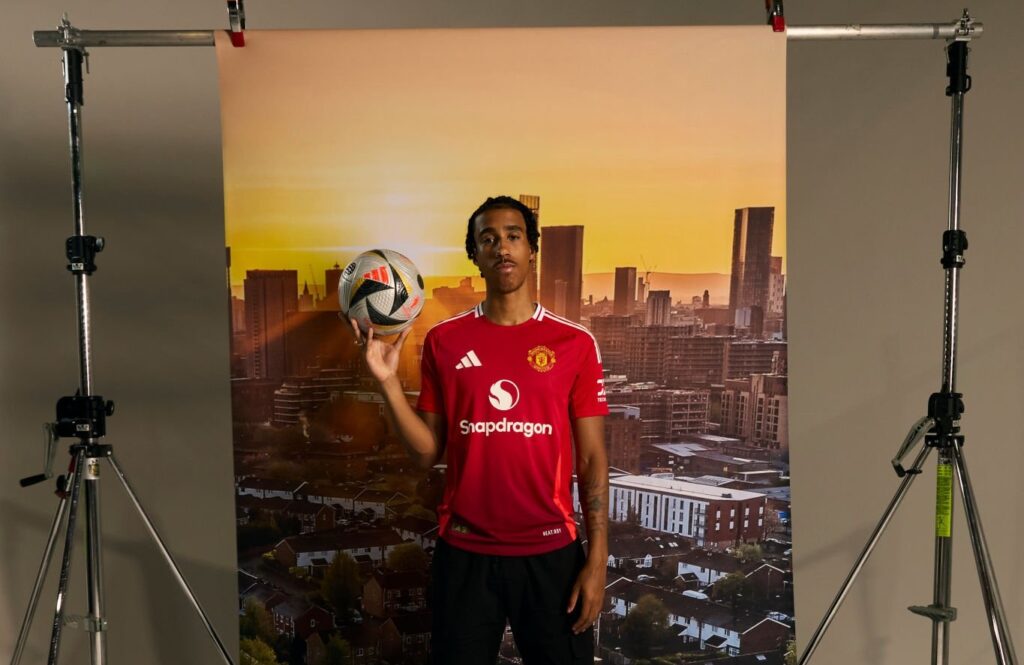
How does this fit at Manchester United?
A tough question. At his current state, Yoro is a good pass-and-move small-zone player in possession who would benefit from a team-wide proactive defending style, while paired beside a stopper partner so that Yoro can reduce committing early and high or wide. I’m not sure if United are currently there yet, but my take is that it fits with the eventual direction the club wants to go towards. Lisandro Martinez fits the partner dynamics and I’m assuming United want to go towards a progressive high line and short build up style of play, even if the current system isn’t there yet.
With all that in mind, I would say Yoro is a signing for the future. Both in terms of his current ability and also Manchester United’s current tactical prowess. Yoro needs development but might just be ready in time for United to be ready to play a game that suits him as well. But until that time comes, I would call for patience. This means limiting his gametime via smart rotation and reducing expectations and pressure on him. The onus on coaching both for his development and for the team’s tactical evolution are high. But the good news is that if both happen as planned, Manchester United could have an elite centre-back in their ranks.
Hope you enjoyed this read. If you’re here from anywhere else do follow me on Twitter. Let me know your feedback and thoughts there.
(Stats credits: fbref.com, transfermarkt.com
Image credits: Manchester United, Getty images)

